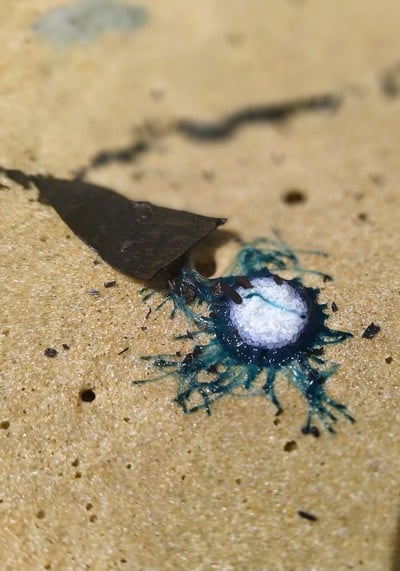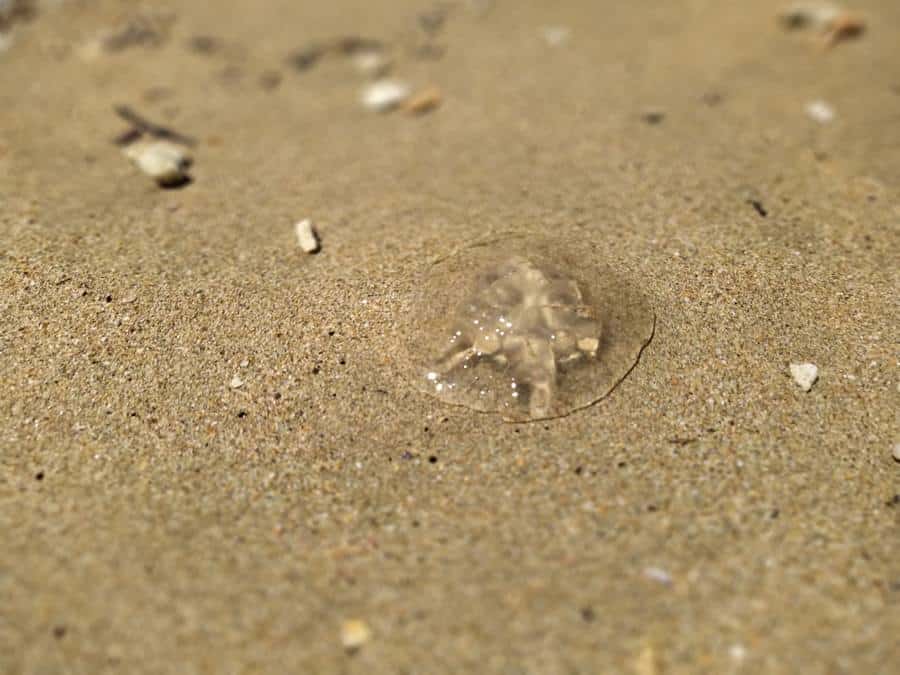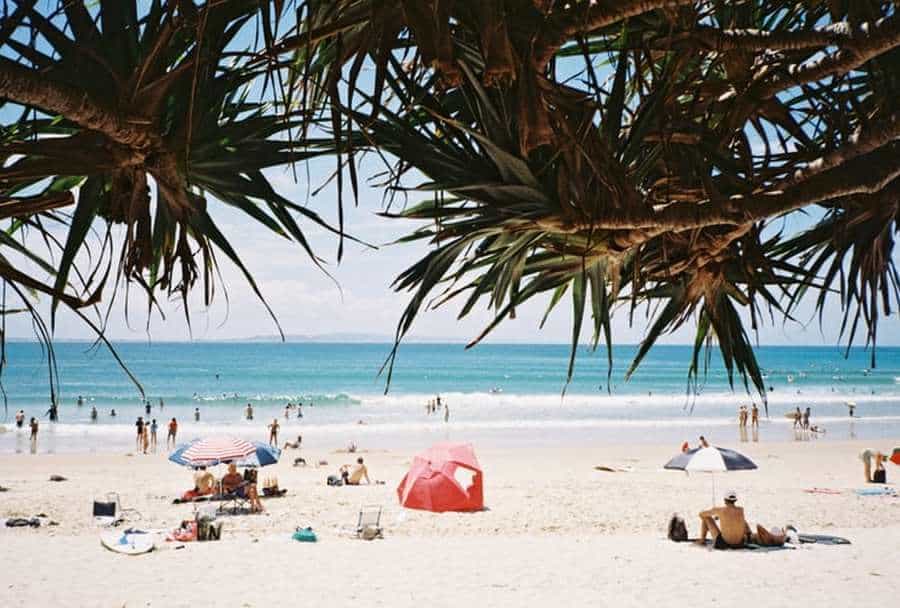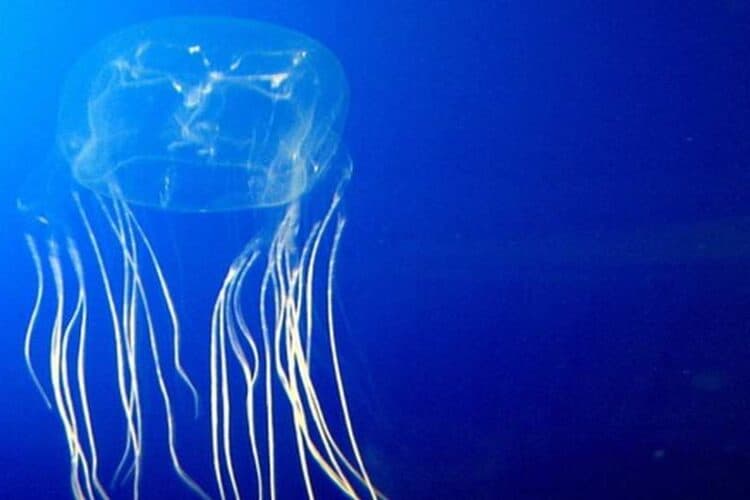Australia is known for its various unique wildlife. Some of this wildlife includes box jellyfish or stingers, which are known to frequent the waters around the country. Stingers and jellyfish are often the same things, however, the difference comes from varying species.
Some species are much more dangerous than others although a sting from either isn’t really pleasant.
Queensland Australia is certainly known for having stingers and box jellyfish in certain parts of the state. Typically, these marine creatures will stick too far north areas of the state as the waters are generally more tropical in temperature. But can they be found as far south as Noosa?
Typically, you won’t find box jellyfish in Noosa’s water. Box jellyfish are one of the more dangerous species of stingers and they are usually found in the Tropical North parts of Queensland. While they are not commonly found here, please read signs found at the beach before you enter the waters.
This species, along with other species of stingers, will not be found much further south of the locality, Gladstone.
In recent years, there have been reports of jellyfish stings that have occurred in the Noosa River. These particular jellyfish were classified as morbakka jellyfish, a close relative to Irukandji jellyfish.
It is important to note that these are variations of box jellyfish. The term “box jellyfish” is widely given to species of stingers that have large boxy, bell-shaped tops and long flowing tentacles with stingers on them.
While it is not common for them to be that far south of Gladstone (which Noosa is 400km south of Gladstone), it is possible. Ocean currents can carry just about anything further distances away from a commonplace. This can lead to different marine life being found in places it isn’t normally found.
Additionally, currents and strong weather can transport all kinds of marine life to the rivers and other bodies of water, such as sharks, stingrays and jellyfish. This could explain the uptick in sightings and stings in the Noosa River by this box jellyfish environment.

Are There Stingers At Noosa Beach?
As expressed, stingers and jellyfish aren’t normally swimming around Noosa. However, Noosa Beach is known for having blue bottles. Bluebottles are related to stingers and jellyfish, however, biologically they aren’t classified as such.
They are known as a siphonophore . Siphonophores are different from jellyfish in that they are a colony of single-celled organisms that form one marine creature. Alternatively, jellyfish are just one singular-celled organism. This difference really sets them apart.
. Siphonophores are different from jellyfish in that they are a colony of single-celled organisms that form one marine creature. Alternatively, jellyfish are just one singular-celled organism. This difference really sets them apart.
Bluebottles can be found in just about any of the waters around Australia, especially certain parts of Queensland. Noosa Beach is one of those places and it is important to know a little bit about bluebottles. Knowing some more about bluebottles can help beachgoers stay alert and aware while at Noosa Beach.
Fast Facts About Bluebottles

Bluebottle Stings Aren’t Known To Be Fatal
Perhaps the term “stinger” instead of “jellyfish” could be applied to bluebottles since they aren’t technically jellyfish. They can still sting! The good news about their stings is that they aren’t known to be fatal.
There are some species of stingers and jellyfish that can kill an affected victim within minutes. Bluebottle stings may cause minor paralyzation, swelling, and pain but they are survivable!
Bluebottles Blend Into The Water Easily Due To Their Colour
Bluebottles are often camouflaged in the water due to their bright blue colour. Even though they are related to jellyfish, as expressed, they aren’t actually jellyfish and their physical form is quite different from that of a jellyfish.
Bluebottles have a distinct blue colour and a gas-filled sac that floats which is where the name “bluebottle” is derived as the sac resembles a blue bottle floating in the water.
Biologically, Bluebottles Are Made Up Of 4 Different Polyp Organisms
Bluebottles are considered siphonophores primarily due to the 4 different polyp organisms that make up their body. The “float” or the blue bottle-shaped gas-filled sac that floats along the water’s surface is one of these 4 polyps. The other three polyps act as a means of catching prey to feed the overall body system.
Additionally, bluebottles do have tentacles much as jellyfish do. These are what can cause painful stings and they sprout out from the 4 polyps of its body.
Bluebottles Can Be Found Throughout Queensland
Bluebottles can be transported in waterways and ocean currents just like any other type of marine life. Because of this, blue bottles can be found throughout Queensland. In extremely terrible weather bluebottles have even been known to wash ashore on beaches throughout Queensland.
This adds another type of danger concerning their stings as they can be covered in sand. Stepping on one of these in the sand can cause stings just as it would stinging in the ocean water.
While stingers and jellyfish aren’t known to always be present at Noosa Beach, or in Noosa overall, bluebottles are going to be the most common type found. It is important to always be alert so that accidents can be avoided as much as possible!
How To Stay Safe From Jellyfish And Stingers
Because jellyfish and stingers can be found on various beaches and river systems within Australia, it is critical to know how to stay safe from these marine creatures. Being proactive about jellyfish and stingers will help people stay as safe as possible.
While it is true that nature can be unpredictable, there are still measures that can be taken to ensure some level of safety is being met. Below are some key ways to stay jellyfish and stinger safe!

Staying Safe Against Jellyfish And Stingers
Always Be Alert Of Jellyfish
The first step in protecting against jellyfish and stingers is to be alert. While this sounds silly to say it really is critical. Being alert to your surroundings aids in being able to see potential dangers. This can be applied to a lot of things in life, however, in Australia, it is a part of everyday life due to the unique wildlife that exists on land and in the ocean.
Always being on the lookout for the distinct bell shape of jellyfish or stingers will allow you time to exit the water if need be. While it isn’t always possible to see everything, it is possible to see enough to be as safe as possible.
Never Swim Alone
Swimming alone is one of the biggest mistakes a person can make. When headed to the beach it is important to have company so that in the event of an emergency, help can be found and provided. This is one of the biggest ways to keep safe against stingers and jellyfish as well.
Accidents can still happen and considering how deadly some jellyfish can be, it can literally be a life-saving moment to have an extra person around.
Try To Avoid Unpatrolled Beaches
For the same reason you should never swim alone, you should try to avoid unpatrolled beaches. Australia is home to over 10,000 beaches and it is practically impossible to patrol them all. Due to this, you should try to stay away from beaches that don’t have those extra pair of eyes to keep a lookout for potential dangers.
This isn’t to say you can’t walk along an unpatrolled beach but swimming in one, even with a beach buddy, just isn’t a smart idea.

Have A First-Aid Kit Readily Available
First-aid kits can be a critical tool in a jellyfish or stinger attack. The kit can include anti-inflammatory medicine, bandages, and even vinegar. Vinegar has been used to help neutralise stings from jellyfish or stingers. It is important to note that this will not always work depending on the species of jellyfish or stinger.
Ideally, anti-inflammatory medicine is key as it helps reduce swelling in the area. If you suspect that you or someone you know has been stung, emergency services should be contacted immediately so they can make their way to the person in distress. First-aid kits can fill the gap until help arrives.
Wear Protective Clothing
An excellent way to ward off stinger and jellyfish stings is by wearing proper protective clothing. Because the ocean is a mysterious place with dangerous marine life, companies have invented a series of protective clothing to reduce the risk of infliction from these creatures while in the ocean.
Protective clothing for stingers includes full-body suits that cover a majority of the skin’s surface and swim shoes. Swim shoes are particularly important as they help swimmers reduce the risk of stepping on something unpleasant.
While these aren’t the only ways to stay jellyfish and stinger safe, they are the most crucial ones. While it is true that not everything can be avoided at all times, it is true that measures can be taken to stay as safe as possible. When it comes to Australian waters, this cannot be stressed enough.
The risk of running into potentially dangerous wildlife is always present. This doesn’t mean people should fear doing things rather than just be smart about how they do it.
Noosa is one of the most gorgeous localities in Queensland and while the area isn’t known for huge populations of jellyfish or stingers, they can still get them. This is why staying smart about entering the water is always important, regardless of where you might be.
This simply ensures that the most pleasant time can be had by all!
More Pages On Other Areas
Vacations are fun and can be a wonderful way for couples to spend quality time together. As a couple spends time together, they create memories to cherish forever. However, one question often arises:...
Recreational fishing in many parts of Victoria requires a licence that enables you to have fun while legally carrying out your non-commercial fishing activities. However, there's often a lot of...


